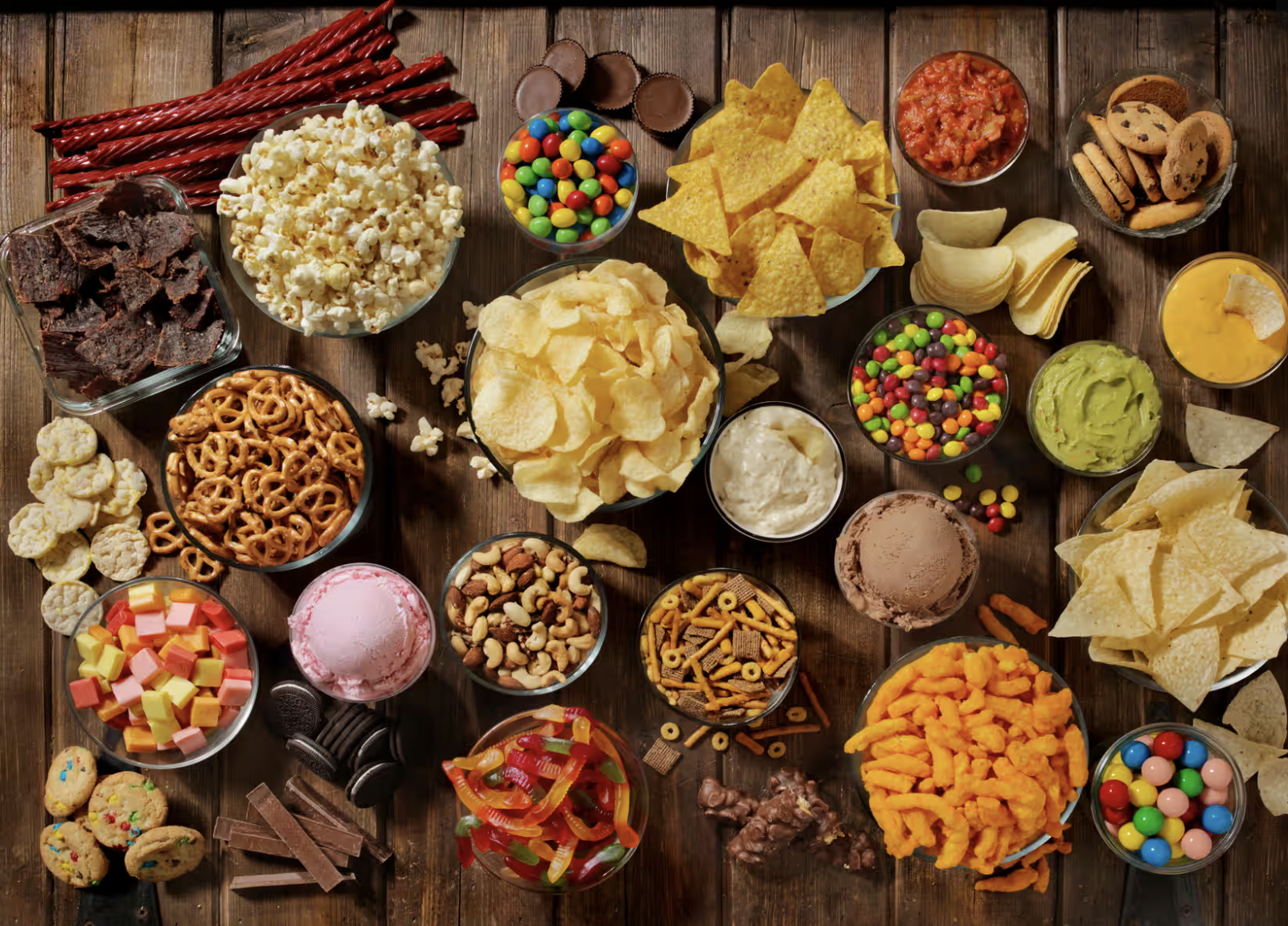Are you a “clean” eater, choosing whole food or minimally processed food most of the time? If so, you are doing better in terms of nutritional choices than most.
Currently Ultra-processed Foods (UPF’s) make up 60% of adult calories (67% or children’s calories), up from 57% in 2018 up from 53.5% in 2001. Processed foods make up 10% of adult calories. That leaves only about 30% of our calories from fresh or frozen unprocessed or minimally processed foods such as fruits, vegetables, grains, legumes, meat, eggs, milk, plain yogurt and spices.
What are Ultra-Processed Foods?
UPF’s are industrially manufactured ready-to-eat/heat formulations that are made with multiple additives and largely devoid of whole food. They are made with substances extracted from foods (oils, fats, sugar, starch, and proteins), derived from food (hydrogenated fats and modified starch), or synthesized in labs from food substrates or other sources (flavor enhancers, colors, food additives). UPFs are laboratory engineered to maximize appeal. You can’t create UPF’s in your home kitchen. Let’s go back to that above stat – over 60% of our calories are coming from the lab.
What then are Processed Foods?
Processed Foods are those that add sugar, salt, oil, or other substances to foods found in nature and are recognized as versions of the original foods. Most have 2-3 ingredients. They are made through baking, boiling, canning, bottling, and fermentation. Examples include cheese, canned vegetables, salted nuts, fruits in syrup, dried or canned fish. When starting from unprocessed or minimally processed foods and adding processed culinary ingredients such as added vitamins, minerals, iodized salt, oils, vinegar, starches, honey, and syrups, breads, pastries, cakes, biscuits, and some meat products also fall into this group.
Health risks tied to consuming UPFs.
UPFs are a key driver of the global rise in chronic diet-related diseases such as obesity, cardiometabolic diseases and cancer. Because UPFs are engineered with very little fiber or healthful nutrients (to keep us satiated), and are calorie dense, they can lead to overconsumption and weight gain and obesity. Obesity is linked to higher cancer rates. Cancer cells have more insulin receptors making them respond more than normal cells to insulins ability to promote growth.
UPFs also contain high salt content which can lead to high blood pressure. They also can contain carcinogens derived from nitrates in preserved food. Added sugar not only leads to more calories, but also higher rates of blood sugar, insulin resistance and type 2 diabetes.
In recent studies a 10% increment in the diet’s portion of UPFs was associated with an increased risk of total cancer, and/or one or more of the following cancers: colorectal, breast, prostate, pancreatic, chronic lymphocytic leukemia and central nervous system tumors. Studies also show 31% higher mortality for the highest versus lowest consumers of UPFs and increased risk of type 2 diabetes, cardiovascular disease and dementia with higher intake of UPFs.
Next time you sit down for a meal or snack, or grab a beverage, ask yourself, am I about to consume processed or UPFs? If so, ditch it and go for the unprocessed or minimally processed choice. Take it one meal at a time. If you make just one change this week that one change can create a ripple effect of better health and disease risk for your life.
Mary Ellen Zung is a certified holistic Health Coach. She can be reached at www.maryellenzung.com or coachmaryellen@outlook.com.





